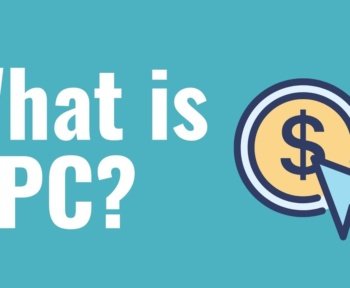If you are looking for a simple and effective way to make money online, pay-per-click (PPC) advertising may be the answer. PPC advertising is a type of online advertising where advertisers pay a fee each time one of their ads is clicked. In this article, we will cover the basics of how to make money with pay-per-click advertising, including the different types of PPC ads, how to choose the right keywords, and how to optimize your campaigns for maximum results.
Table of Contents
What is pay-per-click advertising?
Pay-per-click advertising, also known as PPC advertising, is a model of online advertising where advertisers pay a fee each time one of their ads is clicked. PPC ads are typically displayed on search engine results pages (SERPs), social media platforms, and other websites that have agreed to display ads in exchange for a portion of the advertising revenue.
Different types of pay-per-click ads
There are several different types of pay-per-click ads, each with its own unique features and benefits. Here are the three main types of PPC ads:
1. Search ads
Search ads are PPC ads that appear on search engine results pages (SERPs) when someone searches for a specific keyword or phrase. These ads are typically displayed at the top or bottom of the search results page and are designed to look similar to organic search results.
2. Display ads
Display ads are PPC ads that are displayed on websites that have agreed to display ads in exchange for a portion of the advertising revenue. These ads can be in the form of banner ads, text ads, or even video ads, and can be targeted to specific demographics or interests.
3. Social media ads
Social media ads are PPC ads that are displayed on social media platforms such as Facebook, Instagram, and Twitter. These ads can be targeted to specific demographics or interests and can be in the form of text, images, or video.
How does pay-per-click advertising work?
PPC advertising works by allowing advertisers to bid on specific keywords or phrases that are relevant to their product or service. When someone searches for one of these keywords, the search engine or social media platform will display the ads of the highest bidders at the top of the search results or news feed.
However, the highest bidder does not always win. Search engines and social media platforms also take into account the relevance and quality of the ad and the landing page it leads to. This means that even if you are not the highest bidder, you can still win the ad auction if your ad and landing page are more relevant and high-quality than your competitors.
Choosing the right keywords

Choosing the right keywords is crucial to the success of your PPC campaign. Here are two important factors to consider when choosing your keywords:
1. Keyword research
Keyword research is a critical component of any successful pay-per-click (PPC) campaign. It involves identifying the keywords and phrases that are most relevant to your product or service, and that potential customers are likely to use when searching for solutions to their problems.
To conduct effective keyword research, start by brainstorming a list of words and phrases that describe your product or service. Then, use keyword research tools like Google Keyword Planner, SEMrush, or Ahrefs to identify other keywords and phrases that are related to your product or service, as well as their search volume and level of competition.
2. Keyword Match
In addition to choosing the right keywords, it’s important to use the right keyword match types in your PPC campaign. Keyword match types determine how closely a search term must match your chosen keyword for your ad to appear in the search results.
There are four main types of keyword match types:
- Broad match: Your ad will appear for any search term that is related to your chosen keyword, regardless of the order or context of the search term.
- Modified broad match: Your ad will appear for any search term that includes the modified keyword in any order, but may also include other words in the search term.
- Phrase match: Your ad will appear for search terms that include your chosen keyword in the same order and context as you have specified, but may also include other words before or after the keyword.
- Exact match: Your ad will appear for search terms that exactly match your chosen keyword, without any additional words before, after, or in between.
Effective PPC ads

Creating effective pay-per-click (PPC) ads is a crucial aspect of any successful PPC campaign. Your ads need to be compelling and attention-grabbing in order to attract clicks and generate conversions. Here are three key elements to focus on when creating effective PPC ads:
1. Headline
Your ad headline is the first thing that potential customers will see, so it needs to be attention-grabbing and relevant to their search query. Make sure to include your primary keyword in the headline to show that your ad is relevant to their search.
Use strong language that communicates the value of your product or service, such as “Get Results Fast” or “Unlock Your Potential Today.” Consider including numbers or statistics to make your ad stand out even more.
2. Description
The description is your chance to provide more detail about your product or service and convince potential customers to click on your ad. Keep it concise and focused, using clear and concise language that communicates the benefits of your offering.
Use bullet points to make it easy to read and digest, and make sure to include a call-to-action that encourages potential customers to take the next step.
3. Call-to-action
Your call-to-action (CTA) is the final piece of the puzzle. It should be clear, concise, and action-oriented, encouraging potential customers to take the next step in the sales funnel.
Examples of effective CTAs include “Sign up now,” “Learn more,” or “Start your free trial today.” Make sure that your CTA is prominent and stands out from the rest of the ad copy.
Setting up PPC campaigns
Setting up a pay-per-click (PPC) campaign can be a complex process, but by breaking it down into three main steps, you can create a solid foundation for a successful campaign. Here are the three main steps involved in setting up your PPC campaign:
1. Creating your account
The first step in setting up a PPC campaign is to create an account with your chosen advertising platform, such as Google Ads or Bing Ads. This will involve providing some basic information about your business and setting up billing and payment options.
Once your account is set up, you can begin to create your first campaign.
2. Creating your campaign
The next step is to create your campaign. This involves setting your campaign goals and creating your targeting and bidding strategies. To do this, you will need to select your campaign type (such as search or display) and set your budget and bidding strategy.
When creating your targeting strategy, consider factors such as location, language, demographics, and interests. You may also want to use keywords or audience targeting to further refine your targeting.
3. Creating your ad groups
Finally, you will need to create your ad groups. Ad groups are where you will organize your ads by theme or keyword, and they help you to ensure that your ads are targeted and relevant to your audience.
To create your ad groups, start by identifying the keywords or themes that you want to target with each group. Then, create ads that are specific to each group, using relevant keywords and messaging to appeal to your target audience.
Monitoring and Optimizing PPC campaigns

Monitoring and optimizing your pay-per-click (PPC) campaign is an ongoing process that requires careful attention to your results and data. Here are three key steps involved in monitoring and optimizing your PPC campaign:
1. Tracking your results
The first step in monitoring your PPC campaign is to track your results. This involves using tools such as Google Analytics to monitor metrics such as clicks, impressions, and conversions.
You should also track your ad spend and ROI to ensure that your campaign is delivering a positive return on investment.
2. Analyzing your data
Once you have tracked your results, the next step is to analyze your data. Look for trends and patterns in your data that can help you to identify areas for improvement.
For example, you may find that certain keywords or ad groups are performing better than others, or that your ads are not getting enough clicks or conversions.
3. Making adjustments
Based on your analysis, you can make adjustments to your campaign to optimize its performance. This may involve tweaking your targeting strategies, adjusting your bidding strategies, or revising your ad copy to improve its relevance and appeal to your target audience.
You should also regularly test different ad variations to see which ones perform best and use A/B testing to compare different ad elements such as headlines and calls-to-action.
Conclusion
In conclusion, pay-per-click advertising can be an effective way to drive traffic to your website and generate revenue for your business. While it may seem overwhelming at first, with the right strategies and tactics, anyone can succeed with PPC advertising.
By conducting thorough keyword research, creating effective ads, setting up your campaign properly, and monitoring and optimizing your results, you can create a successful PPC campaign that delivers results.
Remember, it’s important to be patient and persistent with PPC advertising. It may take time to find the right keywords, ad copy, and targeting strategies that work best for your business. But with dedication and hard work, you can achieve success and make money with pay-per-click.
So don’t be afraid to dive in and start experimenting with PPC advertising. With the right mindset and approach, you can turn your advertising budget into a profitable investment for your business.






0 Comments
Bryant Porter
Somebody essentially help to make significantly articles I’d state. This is the first time I frequented your web page and up to now? I surprised with the research you made to make this actual post incredible. Fantastic job!